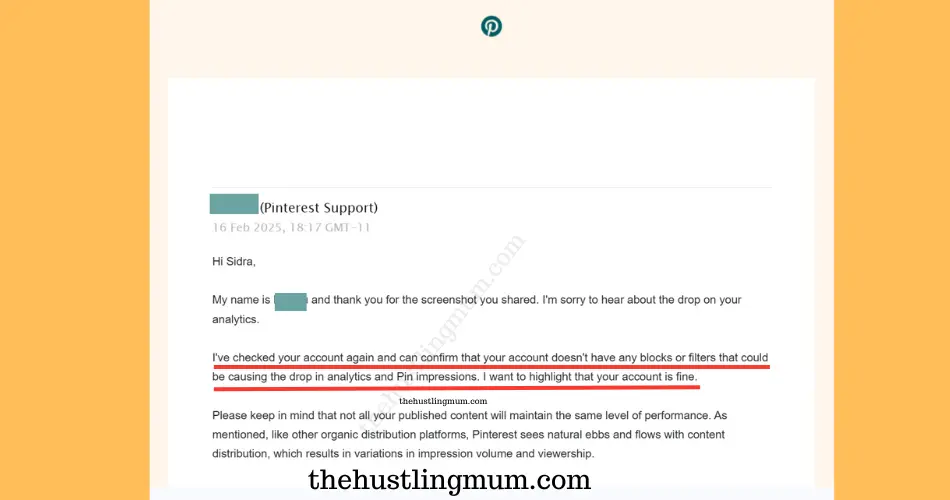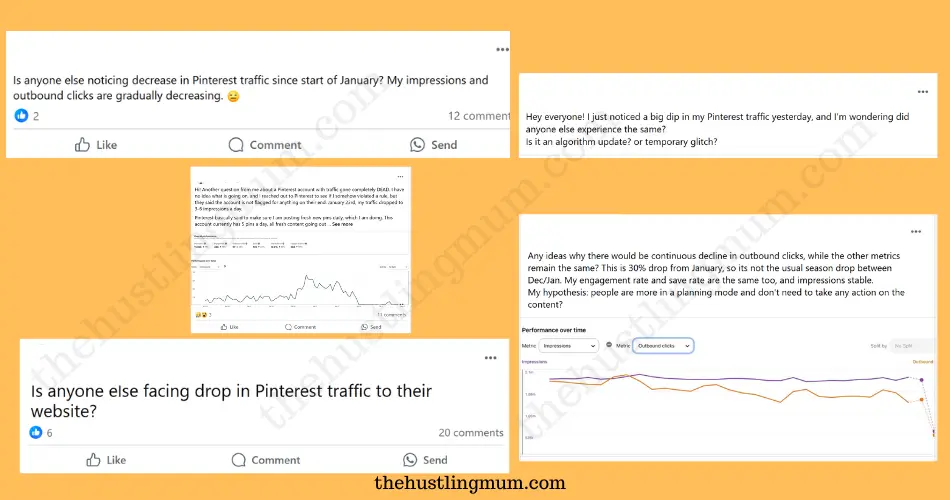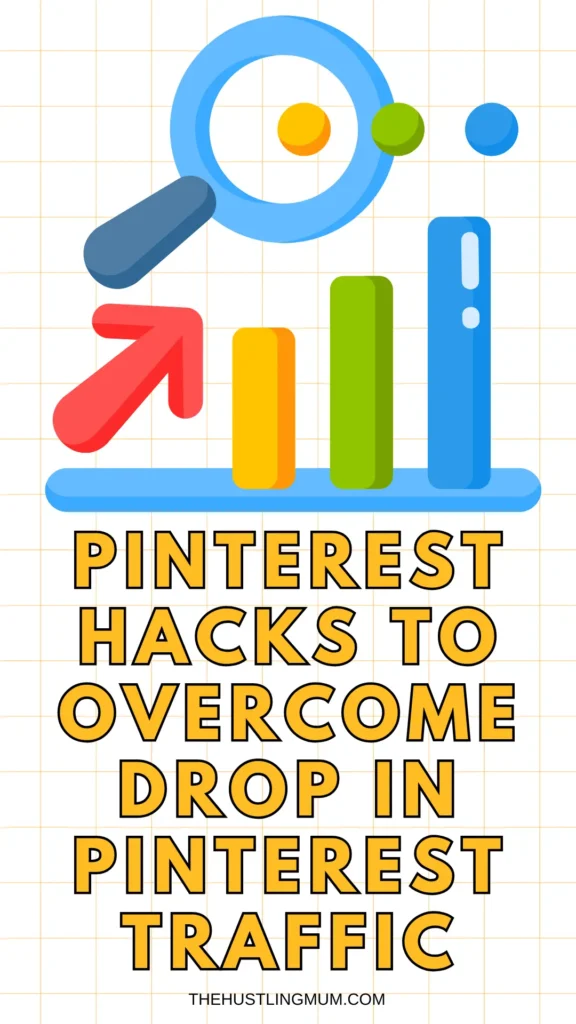At the beginning of January this year, I noticed something alarming — my Pinterest impressions plummeted. This sudden Pinterest traffic drop was incredibly frustrating as someone who relies heavily on Pinterest to drive traffic to my blog. My pins, which once ranked well and brought consistent traffic, started to disappear from the Pinterest search results.
I couldn’t help but think the worst: Was my account shadow-banned?

I reached out to Pinterest support. Initially, they kept sending me generic emails that my account was not shadow-banned. I kept emailing them and also shared my Pinterest analytics with them. Then I received an email from their support team representative and he assured me that everything was fine.

Yet, my analytics told a different story. It felt like I was shouting into a void, with no idea what had gone wrong.

But then I started noticing I wasn’t alone. Many other bloggers and Pinterest users were facing the same issue. The drop in impressions and traffic wasn’t personal — it was likely a result of a Pinterest algorithm shift.

Fast forward to March, and my numbers finally began climbing again.

I’m excited to share the strategies that helped me bounce back and grow my Pinterest impressions and blog traffic once more. Here’s exactly what I did.
My Pinterest Strategy to Overcome Pinterest Traffic Drop
Stayed Consistent with Pinning
Even when my pins weren’t performing well, I didn’t stop. I kept pinning consistently because Pinterest rewards regular activity. The platform favors creators who consistently provide fresh content, so giving up wasn’t an option.
I continued with my normal pinning routine, ensuring my account stayed active. Even if my reach was lower than usual, I kept my presence alive on the platform.
Published Fresh Blog Content
Pinterest loves new content, and I knew that publishing fresh blog posts would give me more material to pin. Rather than recycling the same URLs, I focused on creating valuable content that my audience would find useful.
Every new post I published got its own set of fresh pins with eye-catching designs and keyword-rich pin titles and descriptions. This signaled to Pinterest that I was actively contributing new, relevant content.

Increased My Pinning Frequency
For over a year, I had been pinning five times a day, and it worked well. But during this low-impression period, I decided to adjust my strategy. I increased my pinning to 10 times a day.
Here’s how I made it work:
- I ensured each pin linked to a different URL.
- I never repeated the same URL before seven days.
- I used a mix of fresh content and older evergreen posts.
This allowed me to stay active and diversify my reach without risking any spammy behavior.
Created New Boards with Keyword-Rich Descriptions
To give my pins a better chance of being discovered, I created new boards that aligned with my blog’s topics. Each board had a clear, keyword-rich description that reflected what users might search for.
Whenever I published a new pin, I added it to the most relevant boards. This improved my chances of ranking in search results and reaching a broader audience.

Experimented with Different Pin Designs
My pins were working well for me before this Pinterest dip, but I decided to experiment with my pin designs. So, I created a variety of pin designs to see what resonated with my audience.
Some of my changes included:
- Creating text-heavy pins with bold headlines.
- Designing image-only pins that focused on visuals.
- Using a fresh set of templates to keep my content visually appealing.
By presenting my content in different ways, I increased the likelihood of capturing different users’ attention.
Download free Pinterest pin templates here.
Used Pinterest-Inbuilt Scheduler
I love using Pinterest’s native scheduler, and I continued relying on it throughout this period. It helped me stay consistent with my pinning schedule without having to be glued to Pinterest all the time.
The Pinterest scheduler allowed me to plan and space out my pins, ensuring a steady stream of content was published daily. It’s a simple yet powerful tool that I highly recommend to stay organized and maintain a regular pinning rhythm.
I would love to see Pinterest increase the maximum number of pins allowed for scheduling and extend the scheduling duration to up to three months.
Final Thoughts
If your Pinterest impressions are dropping, don’t lose hope. I’ve been there, and I know how discouraging it can be. But with patience and consistent effort, it’s possible to recover.
Stay consistent with your pinning, publish fresh content, and experiment with designs. It is essential to optimize your account, pins, and boards. It may take some time, but these strategies can help you see progress.
Get your free Pinterest SEO checklist here.
Have you experienced a Pinterest slump recently? What strategies worked for you? I’d love to hear your thoughts in the comments!
If you found this post helpful, don’t forget to pin it and share it with your friends.


I am a passionate blogger who loves sharing insights on blogging tips, Pinterest strategies, and making money online. With a knack for simplifying complex concepts, I help readers grow their online presence and achieve their Pinterest marketing goals. Follow along for practical advice and proven tactics to elevate your blog, Pinterest and online business.
